Five tough lessons I learned managing digital agencies
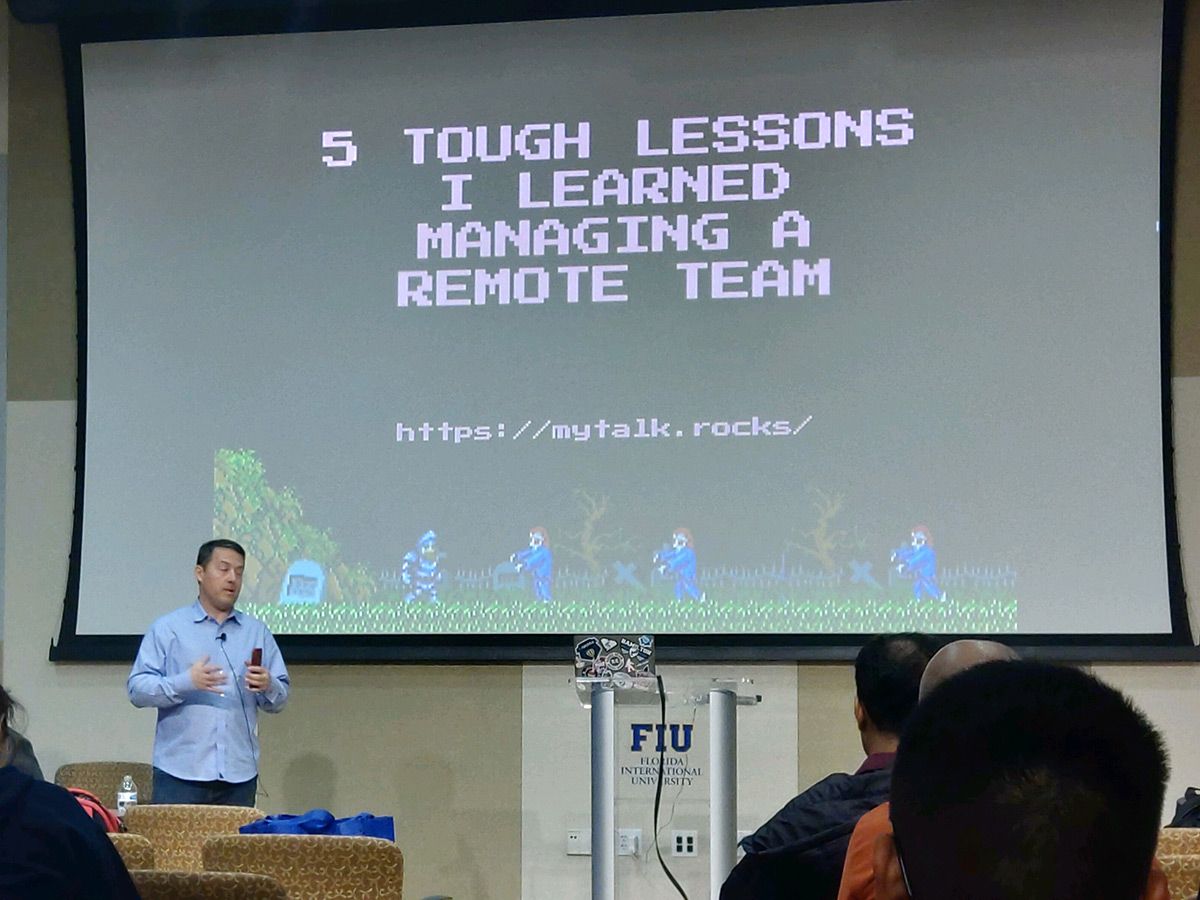
I have been managing digital agencies for two decades. But that wasn’t always the case.
I grew up in the 1970s on a remote island in the North Atlantic ocean. The climate was harsh, we struggled to pay the bills, and life always seemed a little harder than it had to be.
At the start of each school year our “new clothes” were a mix of hand-me-downs and hand-knit items like the beauty shown here in my 5th-grade school picture.

For breakfast, we didn’t have Honey Smacks like the other kids in the neighborhood. We poured bowls of puffed wheat from bulk 2-gallon bags and smothered it with raw sugar.

Making ends meet
In our free time we would go hunting and fishing.
But if we wanted to go out on the water, we literally had to build a wooden raft by hand each Spring.
As you can see in this picture of me, we had to be creative to make ends meet.
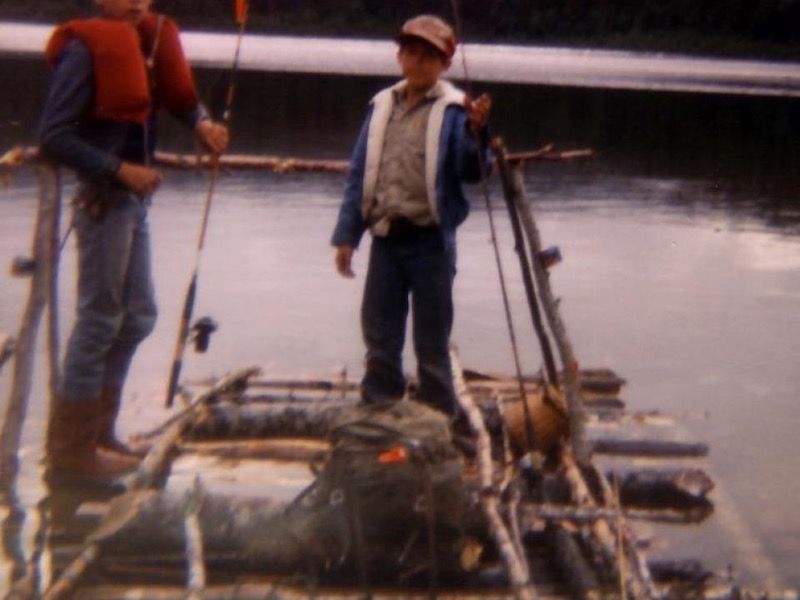
Best Christmas ever
But in 1981, something happened that changed my life: I got a brand-new Atari 2600 gaming console for Christmas.

You can see how excited I am.
My parents spent nearly a year making secret trips to the local Woolworth’s department store with $5 and $10 installments until it was paid for.
My 2600 came with one game: Asteroids. Isn’t it glorious?

I played it non-stop for months all while begging my parents to buy more games. Eventually, my Dad told me that if I wanted more games, I would have to get a job.
Time to make the donuts
Back in 1982, the only regular job a 10-year old could get was delivering newspapers. So that’s what I did.
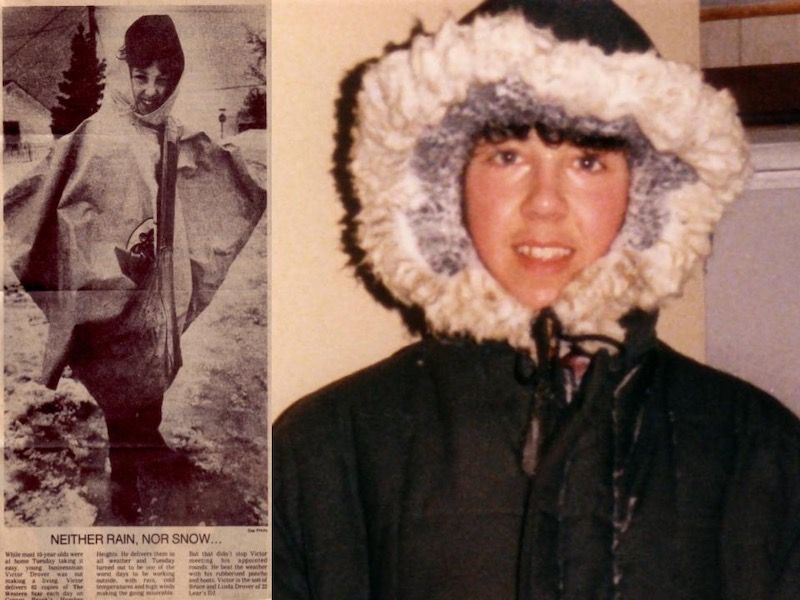
Despite the harsh conditions, this crappy, low-paying job was my ticket to more gaming.
As I got older I replaced my home console with frequent trips to the video arcade. I would spend hours and hours pumping quarters into classic games PacMan, Galaga, and — my favorite game of all time — Ghosts and Goblins.
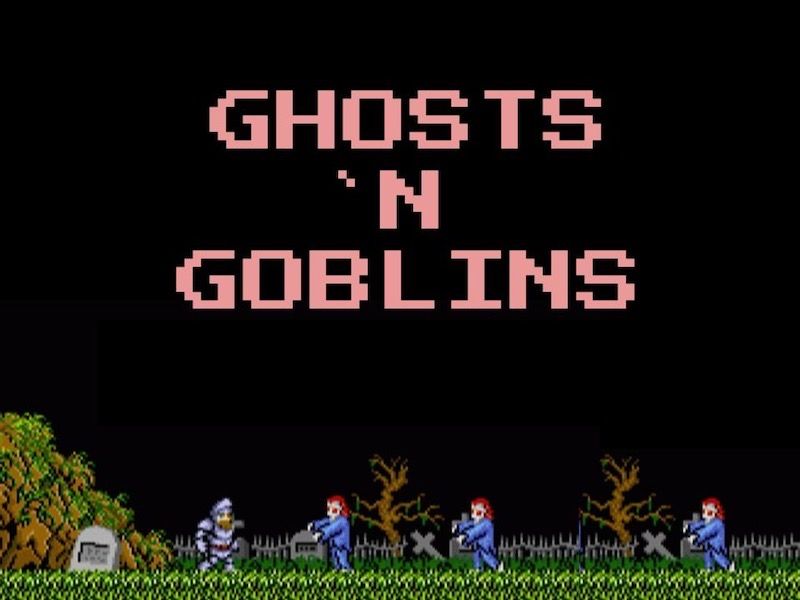
As you can see, battling zombies was popular long before The Walking Dead.
Now, you’re probably wondering what video games and newspaper delivery has to do with managing digital agencies. Well, consider these characteristics of newspaper delivery:
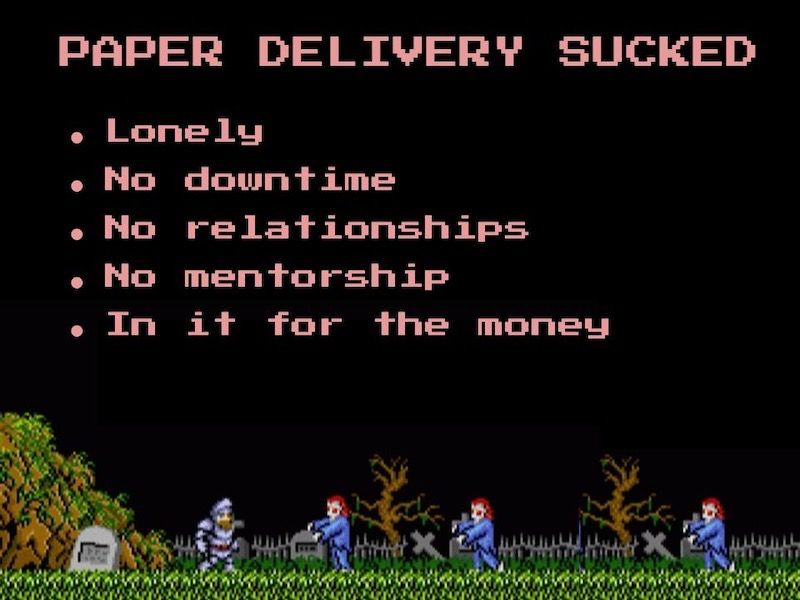
- It is lonely. I spent a lot of time by myself delivering newspapers. At the height of my career, I had 300 recurring subscribers which took at least 2 hours every day to deliver.
- I felt like I was always working. Because there was always a handful of customers that had not paid their bill, they required seemingly constant after-hours follow-ups.
- There is no opportunity to form professional relationships. I never got together with any other paper carriers and never met any of the adults working for the newspaper. There was no mentorship, and no opportunities to learn and “move up”.
- I was only in it for the money. Due to the inherent isolation, it was hard to be emotionally invested in the job.
If you have worked at a digital agency for any amount of time, especially when working remotely, I am sure many of these struggles are familiar to you. You could even make the case that door-to-door sales was one of the original remote jobs available!
Lessons from 2 decades of managing digital agencies
Fast forward to today, I’ve spent the last 20 years building and managing digital agencies for web site and widget development. Currently I run a SaaS company called Watchful with a team of six. I have seen these problems first-hand, but from the other side of the table.
I’ve made lots of mistakes during this time and have learned some tough lessons that made managing digital agencies more enjoyable, rewarding and effective. I want to share some of those with you now as they apply equally well to remote and traditional, in-person agencies.
Lesson 1 — Use meetings to empower
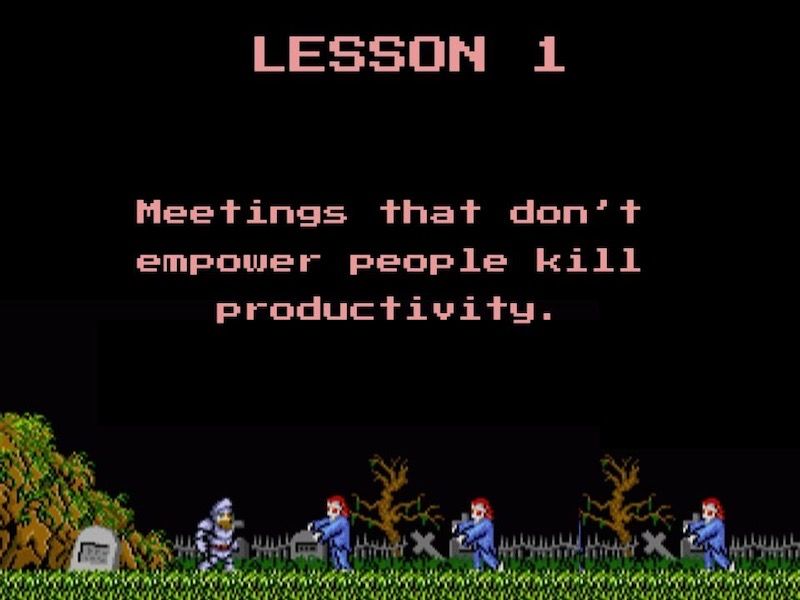
The first lesson I learned is this: Meetings that don’t empower people kill productivity.
How many meetings have you been in where folks were rolling their eyes or tuning out? We’ve attended so many poor meetings, we’d rather not have them at all.
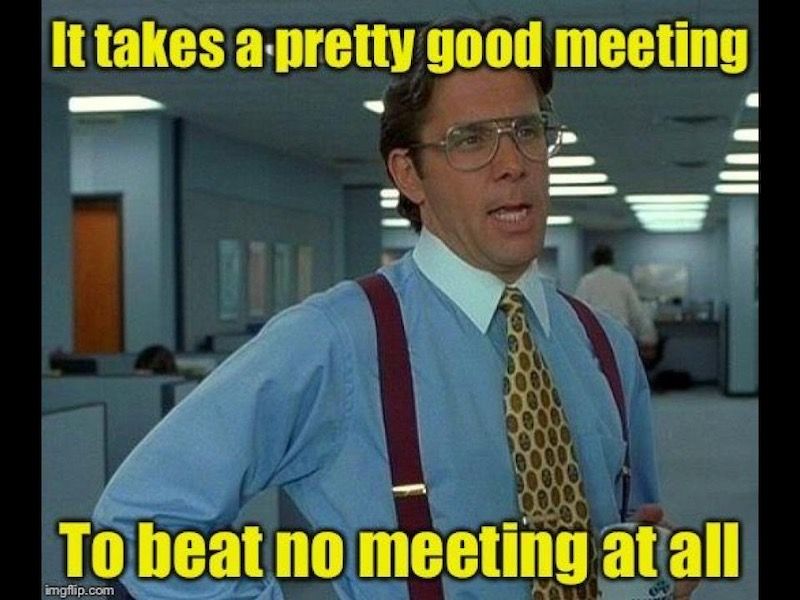
These meetings have a lot of common features:
- Only 1 person talks
- There is no agenda
- There are no goals
- No one keeps things on-topic and on time
- The meeting could have been an email
Not only do these kinds of meetings illustrate a failure of leadership, they deny your team the opportunity to take ownership and pride in their work. Your team can’t showcase their efforts, or leverage their ability to solve problems.
And when you work remotely, your team needs those opportunities.
At Watchful, we work hard to have good all-hands-on-deck meetings each week.
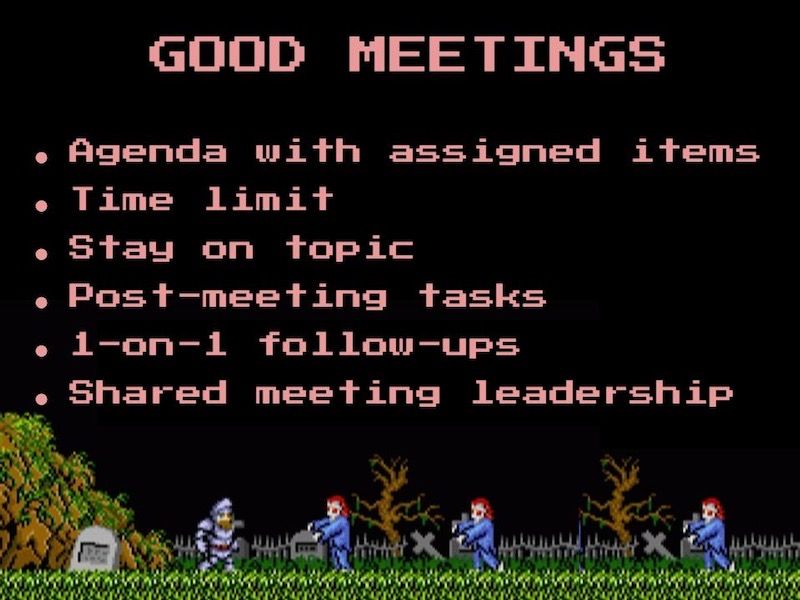
We have an agenda, a 40-minute time limit, and a scheduled time for everyone to speak. We close the meeting with a list of action items. To stay focused and keep everyone engaged, we often cut long conversations short and schedule smaller 1-on-1 meetings.
Our meetings happen even when I’m traveling. I’ve empowered the senior people in my team to take that on as leaders.
Of course, not everyone is leading a team. If you find yourself attending a lot of poor meetings, find ways to communicate your concerns and ideas to your boss or direct report. If you want to be more subtle, try some of these techniques to improve the meeting:
- Offer to help write the agenda.
- Inquire about the meeting duration, maybe noting another meeting you are trying to schedule.
- Suggest 1-on-1 follow-ups during the meeting to move things along.
In short, better meetings are more fun, empower your team, and lead to improved productivity or outcomes. Do what you can to improve your meetings regardless of your role in the management of a digital agency.
Lesson 2 — Create a vision as a team
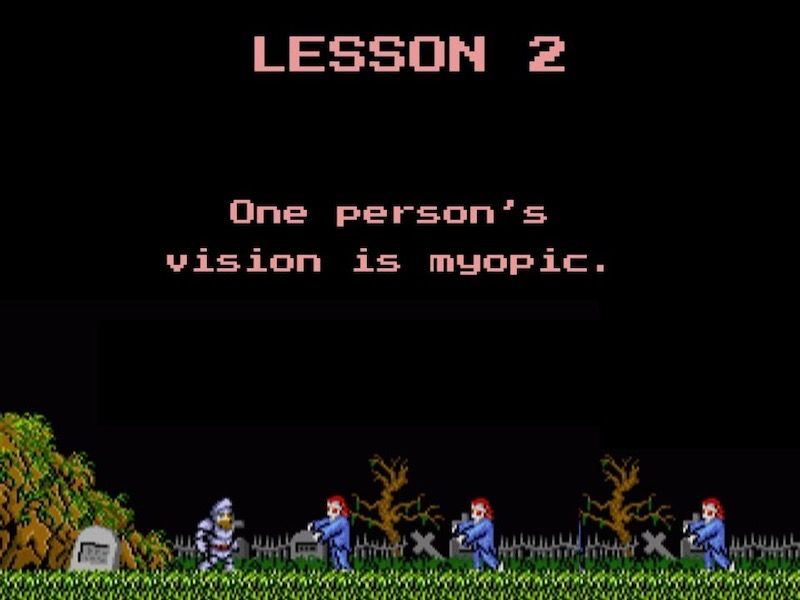
The second tough lesson I’ve learned managing digital agencies has to do with vision and long term strategy. In short, one person’s vision is myopic.
Let me provide some context.
After building my first hobby websites, I moved into the widget business selling plugins.
The widget gained some traction and I started building a team to support it. I was pretty confident that I knew the right features that should be added next as well as the long-term vision and strategy for the company.
While we had success initially, the ideas that were taking the bulk of our development time were not bringing in more sales. In the span of about 5 years, sales had dropped nearly 50% from our peak, The business was in such trouble, my partners and I decided to pull the plug and move on.
After a lot of self-reflection, I finally realized that these issues could have been prevented had I shared my vision with my team and asked for their input.
I was too close to the action to make wise decisions, and I didn’t ask for much input from my team. This also discouraged the team because their voices were not heard and their expertise wasn’t recognized.
These days we use a planning and strategy workflow centered around team input. For example, two months ago I put together the first draft of our 1-3 year strategy.
I used this BHAG template to do that. BHAG stands for Big Hairy Audacious Goal.
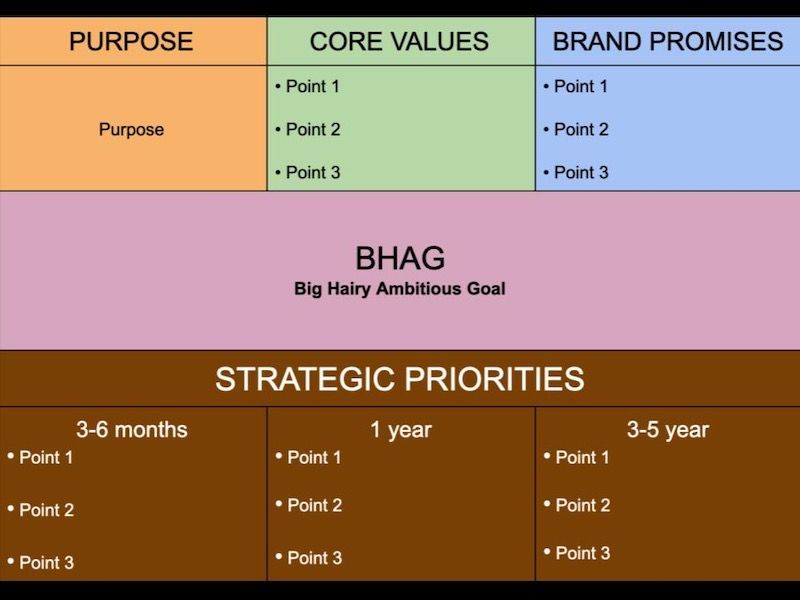
I then sent the BHAG summary to my team and let them mull it over and provide written feedback.
We then dedicated one of our all hands on deck meetings to reviewing it and discussing the BHAG and the strategy.
Another few weeks went by until our annual retreat — shown here in this team photo taken in London on Wednesday.
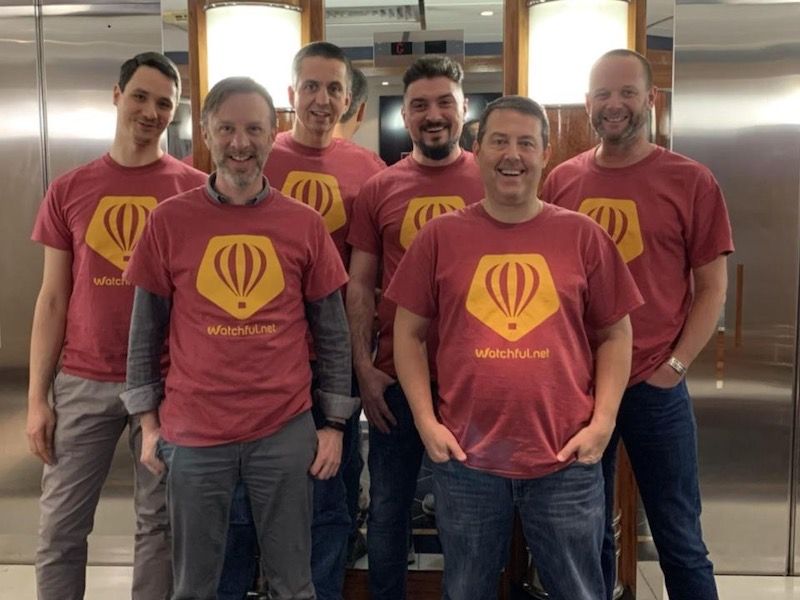
Here we again worked through the BHAG strategy in person.
With everyone’s written and oral feedback, we’ll look to finalize the strategy document before the end of the quarter and settle on a course of action that makes the best sense for BOTH the business and also for the team.
In summary, if you include your team in big decisions, and you don’t rush, I am confident you’ll find a lot of great perspectives from your team.
Importantly, don’t let time nor ego be the enemy of good strategy.
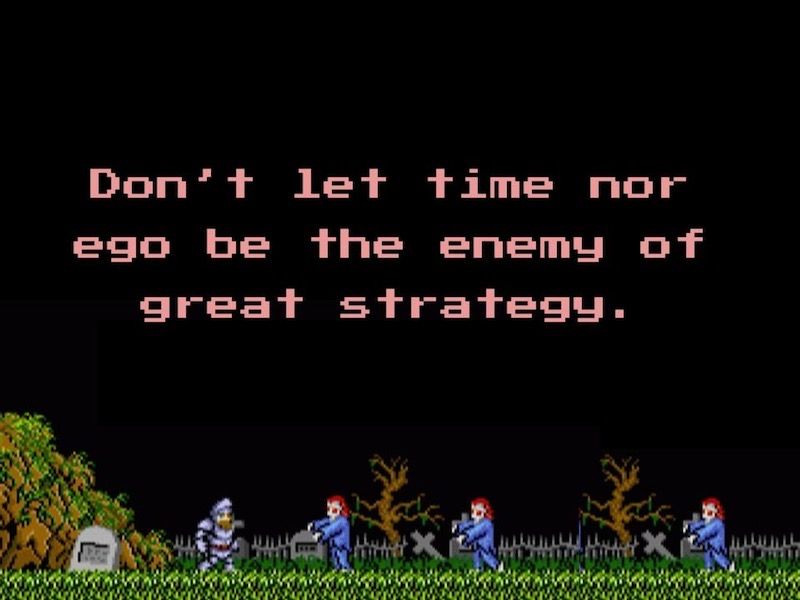
Lesson 3 — Get the culture right
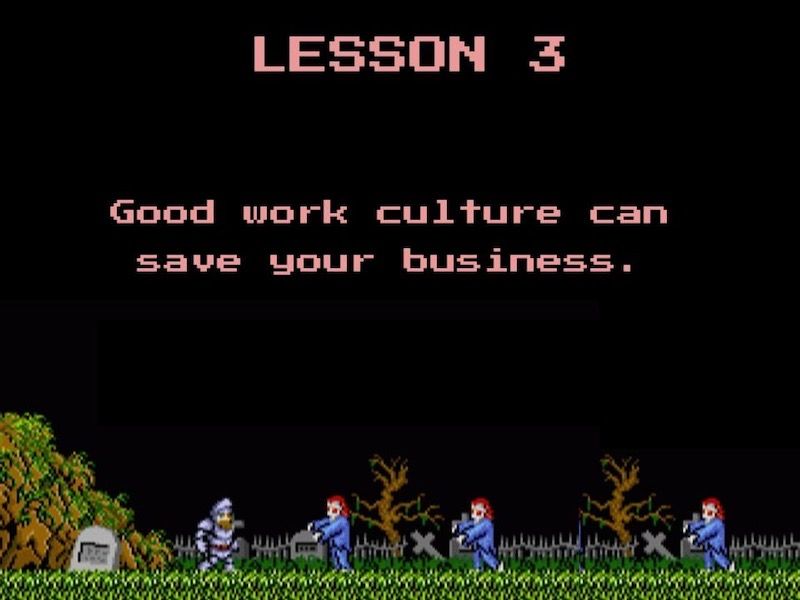
Here is the next tough lesson when managing digital agencies: good work culture can save your business in unexpected ways.
To understand my perspective on this one, you have to know that I’m an early adopter and more generally a very curious person. I’m always chasing the shiny new framework or that next great tool. I always update my devices when the betas come out. I’m constantly buying new kitchen gadgets!
In other words, I’m easily distracted.

And when I get a new idea for my business, I’m quick to head down a rabbit hole and start discussing how this widget could integrate here, be a great fit there, and generally be totally cool.
In the past, I would have juggled priorities and switched direction without much pushback even from my senior engineers. Remember, this kind of behaviour already cost me 1 business.
But I am thankful now to have a team that is quick to remind me of our priorities and commitments.
They even came up with an internal proposal process that everyone — including me — needs to use before updating our roadmap.
This kind of thing only happens if you get the culture right. Otherwise, people won’t be bothered to speak up or participate. They won’t care if you spin your wheels and waste resources. They won’t feel comfortable telling the boss he’s wrong.
There’s more good news: having a great work environment can even make up for a lack of expertise.
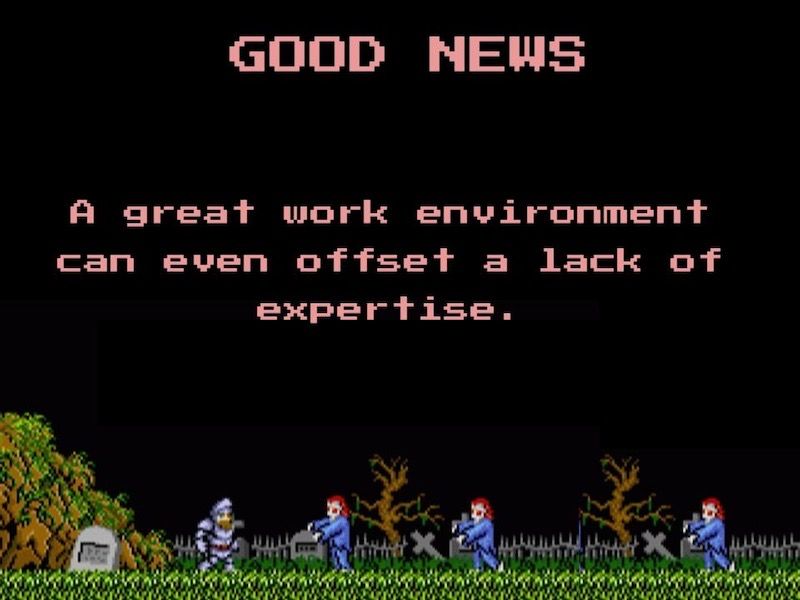
So, how do you create a company with a good culture? Here are some tips that worked for me:
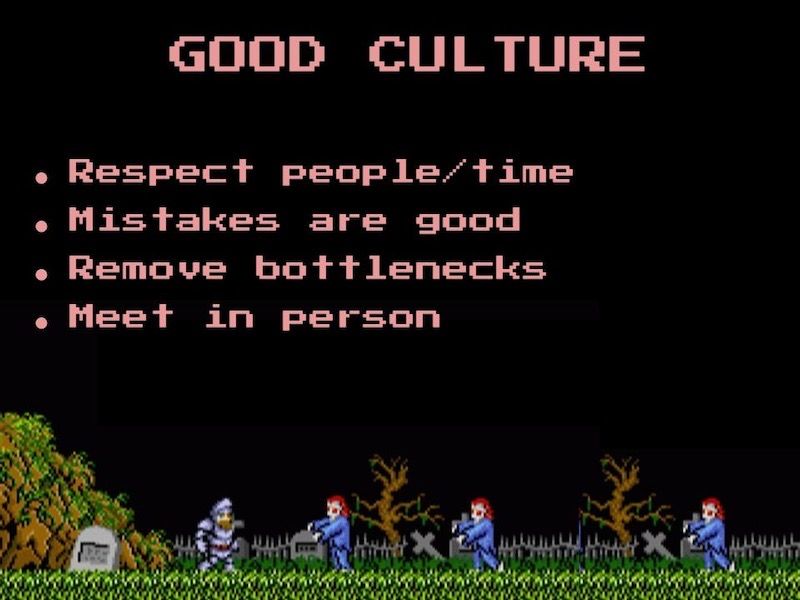
- Respect people and protect their time. This seems like a no-brainer but many workers at digital agencies are stressed by the ALWAYS ON culture that technology sometimes brings (and that paper carriers in 1982 know all too well!). To compensate, you must treat people with respect, and respect their time outside of work. Remember, a happy home life is required for a sustainable and productive work life.
- Cultivate an environment of learning from mistakes. If every error is met with a hugely negative response, you’re going to stop hearing about problems very quickly. And that’s going to be very bad for business in the long run.
- Don’t be the bottleneck. Your team can do a lot if you give them the tools and knowledge and access to execute.
- Make time to meet in person. For remote teams, meeting in person on a regular basis is critical. This can be tricky to budget, but it can be worth it, especially if you mix work retreats/sprints with fun team activities.
In other words, give people the tools and experience to leave, but treat them so well they want to stay.
And if you’re interviewing for a new job, look for similar signs during the interview process:
- Is feedback welcome?
- Are expectations and hours clearly defined?
- Did you get to meet with potential colleagues separately from the boss/HR?
- Does the company plan regular in-person meetings?
I’ve spent a lot of time on this point because I believe having a great culture is critical to success. But if you take one thing away from this talk, here it is:
It’s great to have both excellent skills and a great culture on your team. But if you can’t have both, make sure you get the culture right.
Lesson 4 — Use your tools wisely
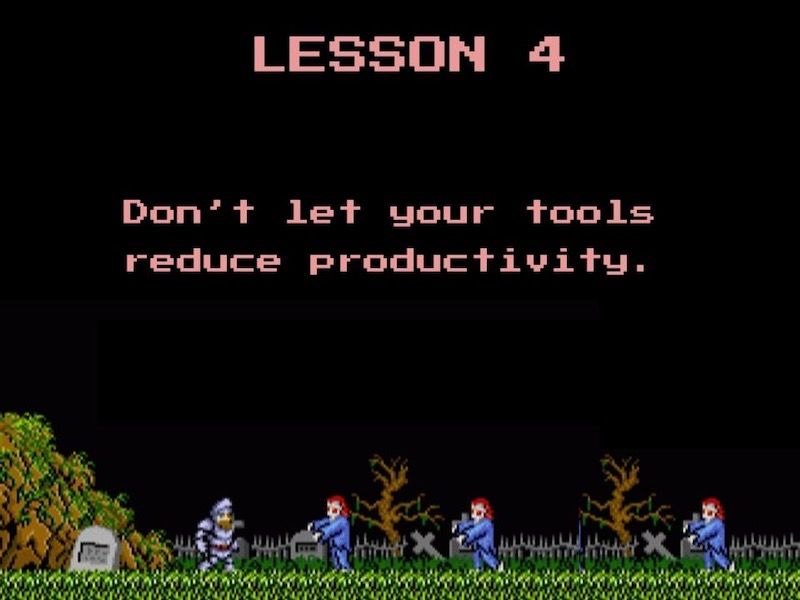
OK, lesson #4: Don’t let your tools reduce productivity.
In-person and remote teams require specialized communication tools. For remote teams specifically, or when working form home, we need tools that help close the geographic gap. Tools that make remote workers feel connected with their colleagues and engaged with their work.
As folks working in web development, a simple list of tools for teams might include:
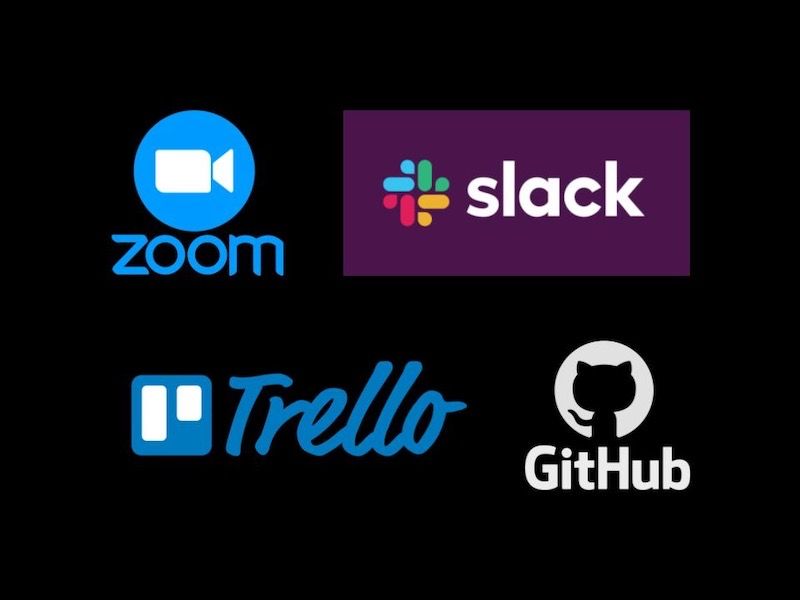
- A video conferencing tool like Zoom.
- A communication tool like Slack
- A project management tool like Trello.
- A collaboration tool like GitHub.
When used properly, these tools can be great. But if you don’t use them properly, or only use them from time to time, then they are likely doing you more harm than good.
For example, maybe you are using Trello to track tasks. Trello is visually appealing, easy to use, and the free tier includes a lot of features. But it’s pretty easy to add a card to Trello in a way that limits its usefulness. For example:
- Adding cards without enough details. This makes it hard for someone to complete the task. It also means you’ve tasked someone else with figuring out what the card is about instead of doing the leg work yourself.
- Not assigning cards, or assigning them to the wrong people. If people don’t get notified of a task they should be working on, how can you expect progress?
- Adding URGENT labels to every card. When everything is urgent, nothing is. In this case, truly urgent items get lost in the noise.
These examples show how easy it is to divert responsibility or confuse priorities.
Importantly, this can happen with any tool. At my company we schedule a regular review of Trello. Regular discussions and training on how to use a tool can also be helpful, as are little hacks like using Trello templates to help standardize processes.
The harder task is building a culture of urgency for tasks or projects. But using tools in ways that maximize productivity and accountability is a big step in the right direction for digital teams.
Reviewing the use or abuse of your critical tools on a regular basis doesn’t sound very exciting, but it’s often these kinds of tasks that will keep your team working well as a unit.
Lesson 5 — Communicate face-to-face
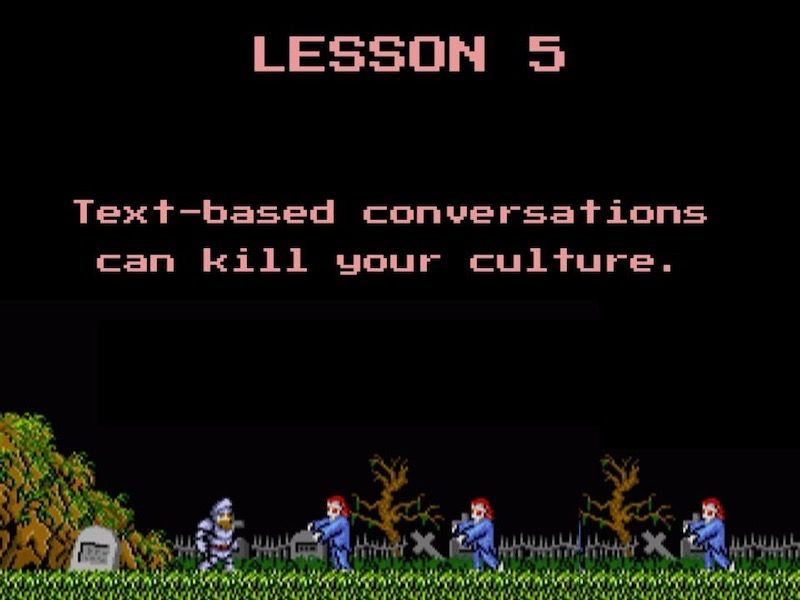
We now come to the final lesson I’ve learned over the years: Text-based conversations can kill your culture.
I am sure many of you have had those days where you debated whether looking presentable for a video call was worth the effort.
Maybe you’re at your desk in your PJs and you think “Meh, I’ll just hop into a Slack channel and type it out instead.”

First, we’ve all been there. But more importantly, face-to-face calls are ALWAYS worth the effort. There really is no text-based messaging option that can substitute for a face-to-face conversation or a phone call.
- Misunderstandings are less frequent.
- Both of you can work in one of your collaboration tools together (which is super-efficient).
- Issues are resolved faster.
- You just might make a friend or improve a professional work relationship.
Video meetings are now my preferred way to communicate with my remote colleagues and I recommend that your remote team spends more time chatting like this if you are not already doing so.
5 lessons learned from managing digital agencies
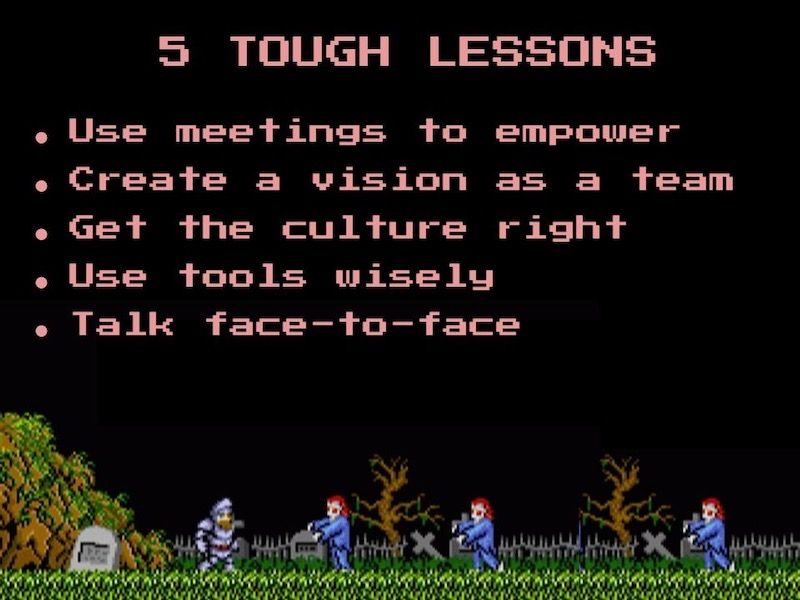
In summary, I made a tonne of mistakes managing digital agencies. Having learned from those mistakes, here are the top 5 things I do today at Watchful:
- Use meetings to empower
- Create a vision as a team
- Get the culture right
- Use tools wisely
- Talk face-to-face
As a result of implementing these changes, I’ve found a new sense of calm and confidence, and so has my team. Not only is work more enjoyable and productive, work-life balance has improved immeasurably.
Perhaps most importantly, my team and I are able to step away from the PC and spend quality time with family and friends.
I no longer have that feeling of ‘always working’ or being ‘always online’. I can even make time to return to my original guilty pleasure: gaming!
A few years ago my brother and I built a stand-up multi-cade using an emulator running on a Raspberry Pi. I was then able to introduce my children to the old school games from the 1980s.
You can see here the initial construction, finishing work, and of course my daughter having a great time playing PacMan on a Ghost’s n Goblins themed box!
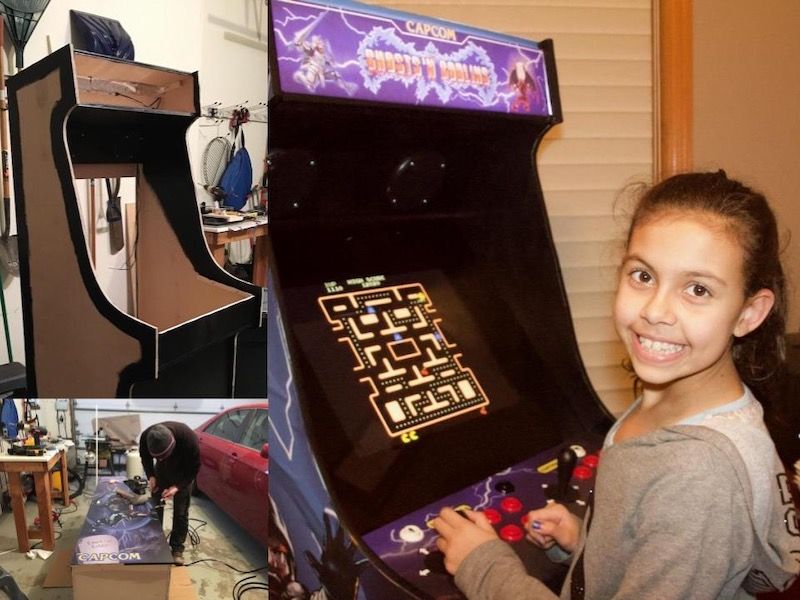
Now, I’m glad she doesn’t have to work the way I did just to play a few video games. But I have a secret: She just got her driving permit at the DMV.
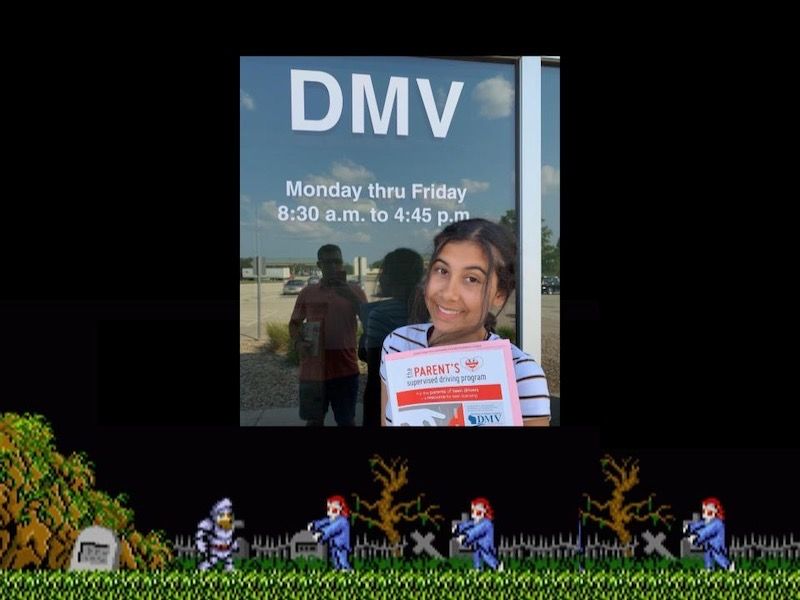
So now I’m just waiting for her to get her license so she can get a job delivering newspapers to support her passions!

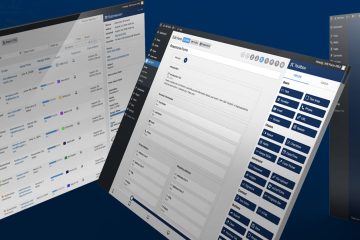

4 Comments
Joe Sonne · March 11, 2020 at 7:50 PM
Great advice Victor. Thanks for sharing your experience.
Vic Drover · March 12, 2020 at 11:32 AM
Thanks Joe!
Martijn Boomsma · March 6, 2020 at 6:47 AM
Awesome. Thanks for sharing, great story! You should publish! 😉
Vic Drover · March 6, 2020 at 7:37 AM
LOL! Guess I kinda did 🙂